In This Issue
- Verizon’s IoT Business
- Cybersecurity Priority
- FBI Break into Device
- Report from the CEO
- AT&T Looks Forward
- IoT & Big Data Cloud
- Twitter Ruled Social
- Big Data Did Triumph
- All Digital Disruption
- Large Data Volumes
- FBI Warns of Attacks
- IT Security Market Up
- 2017 Storage Industry
- Next for IoT Security?
- Avoiding Cloud Storms
- Can’t Ignore the Cloud
- Coming DCIA Events
Verizon’s IoT Business May Soon Top $1 Billion
Excerpted from SDX Central Report by Sue Marek
 Verizon Communications has steadily been building its Internet of Things (IoT) business through acquisitions and investments and may soon top $1 billion in annual revenue from IoT.
Verizon Communications has steadily been building its Internet of Things (IoT) business through acquisitions and investments and may soon top $1 billion in annual revenue from IoT.
Speaking at the Wells Fargo Technology, Media & Telecom investor event this week John Stratton, Verizon Executive VP and President of Operations, said the company’s IoT business was $217 million in the third quarter, a 24 percent increase year-over-year.
“It’s approaching a billion-dollar business,” Stratton said, noting that the majority of that business is coming from telematics, which relates to connected vehicles.
The company just closed on its $2.4 billion acquisition of Fleetmatics Group, which became part of the Verizon Telematics business.
In July it closed on its acquisition of Telogis, which helped increase the company’s telematics capabilities for enterprise customers.
Plus, Verizon in September purchased Sensity Systems, a provider of IoT solutions for smart cities… Read More
Congress Makes Cybersecurity A Non-Partisan Priority
Excerpted from Forbes Report by Andres Franzetti
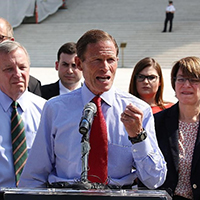
With a lame duck session of Congress looming, federal lawmakers are scrambling to push key legislative items through last-minute. One key area of concern is cybersecurity.
Recent headlines have exposed a wide array of victims, ranging from both corporate to government entities. Stoking concerns is the ongoing controversy surrounding Russian hacking of Democratic presidential candidate Hillary Clinton’s campaign emails and the DNC, in a perceived effort to influence the outcome of the US presidential election.
Against this backdrop, several members of Congress have introduced amendments to the National Defense Authorization Act (NDAA) to strengthen cybersecurity.
Yet, is this enough?
It is without a doubt that the nature of war has changed.
For centuries, war has been waged on battlefields and televised around the clock.
Now, the theatre of war has shifted and is being waged on computer servers, in homes and at places of work… Read More
FBI Can Break into Almost Any Device
Excerpted from International Business Times Report by India Ashok

The FBI has reportedly acknowledged that in a majority of cases it investigates, the agency is able to unlock and access user data on computers and phones.
According to the agency’s general counsel Jim Baker, the FBI is also able to access data from devices of local and state police.
In 2016, in over 80% of cases investigated, the bureau was able to unlock devices and obtain data.
In the past year, the FBI’s forensic analysis team has come across password/passcode protected devices in 2,095 out of 6,814 cases, a mere 13%, Motherboard reported.
In a public meeting on encryption, which took place on 11 November in Washington DC, Baker reportedly disclosed that even within the relatively small percentage of 2,095 devices, the bureau was able to unlock devices in 1,210 cases.
The agency was unable to unlock around 880 devices, indicating that in some 87% cases, it was still able to access user data. The disclosures bring to light the FBI’s arguments on the need for backdoor on encryption… Read More
Report from DCIA CEO Marty Lafferty
 The DCIA commends the US House of Representatives Committee on Energy and Commerce for holding a joint hearing of its commerce and technology committees this week on “Understanding the Role of Connected Devices in Recent Cyber Attacks.”
The DCIA commends the US House of Representatives Committee on Energy and Commerce for holding a joint hearing of its commerce and technology committees this week on “Understanding the Role of Connected Devices in Recent Cyber Attacks.”
Their hearing addressed the October 21st distribution denial of service (DDoS) attack on Dyn by botnets overwhelming popular consumer websites with junk traffic.
The hearing discussed vulnerabilities, possible solutions, and potential ramifications of escalating attacks.
Chairman Greg Walden (R-OR) opened the hearing highlighting the increasing use of Americans by the internet of things (IoT) including applications and devices such as baby monitors and smart appliances.
Members remarked how the DDoS attack stressed the importance of securing these devices without losing the benefits; balancing functionality, innovation, and security.
Expert witnesses warned that manufactures are not incentivized to secure their devices and that attacks targeting critical infrastructure points are increasingly likely.
IoT devices currently do not have built-in security updates or patch mechanisms, and consumers are unaware of the threats posed by their devices.
Harvard fellow Bruce Schneier outlined the elements that need to be secured, from software to hardware to internet communications.
He argued that there might need to be a new agency to handle cybersecurity issues to ensure consistent standards across broad industries.
Kevin Fu, of Virta Labs added that regulations, standards, and liabilities for security need to be built-in, not bolted-on retroactively.
Greater oversight is called for because of the critical consequences attacks can have on both the public and private sectors.
Lawmakers were divided on how to handle the problem, although all agreed on the need to do more to prevent cyberattacks from escalating.
Chairman Walden said, “While I’m not taking a certain level of regulation off the table, the question is whether we need a more holistic approach.”
With the new administration setting priorities and assigning resources, we urge industry participants to join in the call for adequately addressing this critical issue. Share wisely, and take care.
AT&T Exec Looks forward to Working with Trump
Excerpted from the Hill Report by David McCabe
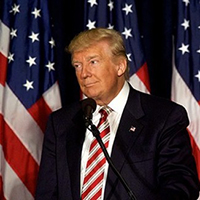
A top AT&T executive on Wednesday said his company looks forward to working with the incoming Trump administration as it seeks to get its purchase of Time Warner approved by the federal government.
John Stephens, the telecom company’s Chief Financial Officer, said at a conference hosted by Wells Fargo that the company’s goals align with Donald Trump’s.
“From a company perspective, we really look forward to working with President-elect Trump and his transition team, he said. “His policies and his discussions about infrastructure investment, economic development, and American innovation all fit right in with AT&T’s goals.”
“We’ve been the leading investor in this country for more than five years running, and our Time Warner transaction is all about innovation and economic development, consumer choice, and investment in infrastructure with regard to providing a great 5G mobile broadband experience,” he added.
“So we look forward with optimism to working with the leadership and providing benefits to consumers and to our shareholders… Read More
With IoT & Big Data, 92% of All We Do Will Be in the Cloud
Excerpted from Forbes Report by Joe McKendrick
 You don’t need Sherlock Holmes to tell you that cloud computing is on the rise, and that cloud traffic keeps going up.
You don’t need Sherlock Holmes to tell you that cloud computing is on the rise, and that cloud traffic keeps going up.
However, it is enlightening to see the degree by which it is increasing, which is, in essence, about to quadruple in the next few years.
By that time, 92% percent of workloads will be processed by cloud data centers; versus only eight percent being processed by traditional data centers.
Cisco, which does a decent job of measuring such things, just released estimates that shows cloud traffic likely to rise 3.7-fold by 2020, increasing 3.9 zettabytes (ZB) per year in 2015 (the latest full year data for which data is available) to 14.1 ZB per year by 2020.
The big data and associated Internet of Things (IoT) are a big part of this growth, the study’s authors state.
By 2020, database, analytics and IoT workloads will account for 22% of total business workloads, compared to 20% in 2015.
The total volume of data generated by IoT will reach 600 ZB per year by 2020… Read More
Election Day, Twitter Ruled Social Media
Excerpted from NY Times Report by Mike Isaac and Sydney Ember

At around 5 a.m. Tuesday on the East Coast, the first signs of presidential chatter started stirring on Twitter, then quickly began to mushroom.
In the ensuing hours, Twitter’s 100 or so staff members working on the company’s Election Day efforts woke up and started dialing super PACs and advocacy groups to place last-minute ads in swing states. By 11 a.m., 27,000 election-related posts were swirling across the network every minute.
The volume of activity was set to soar throughout the evening and overnight, as polls closed and the results of the race between Hillary Clinton and Donald J. Trump came in.
Twitter, meanwhile, worked to promote itself as an election destination, using live video streams with partners like BuzzFeed News, in what was set to become one of the social media service’s busiest days.
Forget about Snapchat and set aside YouTube, Facebook and Instagram.
For all the bluster over the last year about which social media network would dominate the election, 2016 was no different from years past… Read More
Big Data Did Triumph on Election Day
Excerpted from Defense One Report by Patrick Tucker
 One computer forecasting system predicted Trump’s victory — the one with the least human input.
One computer forecasting system predicted Trump’s victory — the one with the least human input.
Donald Trump’s win surprised many around the world, but none more than the modelers and big league prognosticators who were calling for a likely Clinton victory.
That outcome doesn’t mean that data-driven forecasting died on Tuesday.
In fact, the best performance went to an artificial intelligence able to crunch more data than its human rivals.
The takeaway?
Forecasters need new ways to talk about the uncertainty of their models and need to expand beyond “polling data.”
The Defense Department and the intelligence community, who have also grown fond of machine aided prediction, would do well to heed that lesson.
There’s an important and overlooked distinction between a prediction (which suggests certainty) and a forecast… Read More
All Roads Lead to Digital Disruption
Excerpted from CIO Insight Blog by Pat Burke
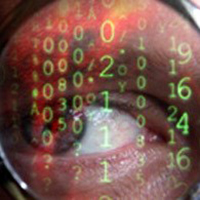 Companies that aren’t traveling along a digital path will face significant challenges down the road.
Companies that aren’t traveling along a digital path will face significant challenges down the road.
As most leaders know, success is accomplished through people.
Smart technology helps, but succeeding in today’s digital realm is a challenge that requires more than simply consuming more technology.
Without smart, dedicated workers adopting a people-first strategy that serves as the main platform of an organization, all other attempts to create a thriving business – whether through raw technology, innovation or brute business force – will eventually hit a wall.
In order to allow consumers, workers and ecosystem partners to accomplish more with technology, business and IT leaders will have to create a culture that sees technology as the way to enable people to constantly adapt and learn, continually create new solutions, drive relentless change and disrupt the status quo.
In an age where the focus is locked on technology, true leaders will put people first… Read More
Large Data Volumes – Fog a Solution?
Excerpted from Future Processing Blog by Marta Malek
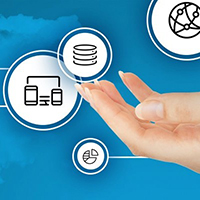
Technology is expanding and we are about to face 10 smart devices per person in 2020.
How to keep them all going smoothly? Can Fog Computing be the answer?
If the title term is new to you, we’ll gladly explain it:
Fog Computing (also known as Fogging) is a solution where cloud computing capabilities are used in pair with local devices.
Large volumes of data are stored locally, using the client’s own devices – this shortens the time needed to access their files, while still allowing to make use of the advanced functionality provided by cloud services.
What are the benefits?
In the reality where the number of devices we use increases every day, sometimes the amount of data is unimaginably large and even the cloud may get overflown – which basically means the access to data is limited, since the system is slower.
Using your local devices to store the data supports mobility, as well as may immensely improve efficiency… Read More
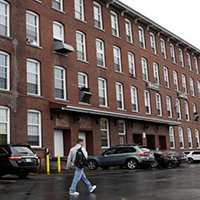 Online attacks launched from thousands of connected devices, such as one that disabled parts of the internet in October, are here to stay, the Federal Bureau of Investigation (FBI) is warning.
Online attacks launched from thousands of connected devices, such as one that disabled parts of the internet in October, are here to stay, the Federal Bureau of Investigation (FBI) is warning.
“The exploitation of the ’Internet of Things’ (IoT) to conduct small-to-large scale attacks on the private industry will very likely continue,” the FBI wrote in an October 26th bulletin to private companies.
A person familiar with the matter said a version of the bulletin that appeared on the internet Friday was authentic.
In a statement, an FBI spokeswoman said, “In furtherance of public-private partnerships, the FBI routinely advises private industry of various cyberthreat indicators observed during the course of our investigations.”
“This data is provided in order to help systems administrators guard against the actions of persistent cybercriminals.”
The FBI issued the bulletin five days after hackers used a network – called Mirai – of internet-connected devices including cameras and digital-video recorders to launch an attack on internet service provider (ISP) Dynamic Network Services (Dyn).
The October 21st attack left more than 1,200 websites unreachable for some… Read More
Growing Threats Fuel IT Security Market
Excerpted from Channel Partners Report by Edward Gately

Thanks to increasingly sophisticated cyberattacks, big growth rates are anticipated in the global markets for cybersecurity.
That’s according to BCC Research’s new report, Cyber Security: Technologies and Global Markets.
For purposes of the report, the cybersecurity market includes companies that provide products and services to improve security measures for IT assets, data and privacy across different domains such as the IT, telecom and industrial sectors.
“IT security is a priority in the prevailing highly competitive environment,” said Basudeo Singh, BCC Research analyst. “About $100 billion will be spent globally on information security in 2018, as compared with $76.7 billion in 2015.”
The global cybersecurity market should reach $85.3 billion and $187.1 billion in 2016 and 2021, respectively, reflecting a five-year compound annual growth rate (CAGR) of 17 percent.
The American market, the largest segment, should grow from $39.5 billion in 2016 to $78 billion by 2021, a projected five-year CAGR of 14.6 percent.
The Asia-Pacific region is expected to grow the fastest among all major regions at 21.4 percent… Read More
What Will 2017 Bring for the Storage Industry?
Excerpted from CloudTech Report by Rick Delgado
 In a field as competitive as the storage market is, knowing what’s going to happen before it actually happens can be extremely valuable.
In a field as competitive as the storage market is, knowing what’s going to happen before it actually happens can be extremely valuable.
And right now, the storage market is going through some big transitions, some of which are upending the industry.
This is kind of to be expected when dealing with a business that incorporates the latest technological advances, but even with that in mind, the rapid evolution underway at the moment is impressive to watch.
The storage market as we know it today will look quite different in a decade.
But let’s not get too far ahead of ourselves; we’ll keep our projections focused and take a brief but insightful look into the not-too-distant future as we see what the experts are saying about the storage market for 2017.
If one thing is consistent across the range of predictions being made, it’s that the role of cloud storage will be integral. More businesses are turning to the cloud for a wide variety of services with storage being one of the primary choices.
In a study released earlier this year, 451 Research found that the cloud storage market was expected to double by next year… Read More
What’s Next for IoT Security?
Excerpted from Semiconductor Engineering Report by Ed Sperling and Jeff Dorsch
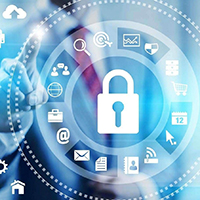 With security, the little things can cause as much of a problem as the big things.
With security, the little things can cause as much of a problem as the big things.
As shown in the recent distributed denial of service attack (DDoS) on Dyn, which created waves of attacks using Mirai malware, connected devices of all sizes can be amassed into an army of bots that can bring even giants like Amazon and Netflix to a dead stop.
This attack was predicted and warned against by numerous security experts since it was published as open source code several months earlier, but that did little to stop its progression.
And therein lies one of the key problems in security today.
There are not enough layers of security being built into electronics to stop these kinds of problems, and no standard way of creating them.
What’s interesting here is that the most recent attack went well beyond the usual software and network breaches.
It targeted the firmware inside devices that were secured by weak passwords… Read More
Avoiding Storms with Good Cloud Policies
Excerpted from Canadian Lawyer Report by Lisa Lifshitz
 It’s fair to say that while cloud computing offers numerous advantages to organizations, it also exposes them to unique risks.
It’s fair to say that while cloud computing offers numerous advantages to organizations, it also exposes them to unique risks.
As many cloud providers make it intentionally easy for individuals to sign up via one-click online agreements for their standard commodity services, companies without adequate controls in place may find themselves bound to unsuitable cloud services arrangements.
Failure to establish adequate checks and balances may expose organizations to regulatory non-compliance, inappropriate business terms or worse. To mitigate these concerns, organizations are increasingly proactively developing and implementing cloud-computing policies to oversee the adoption and implementation of cloud services and outline best practices and approval processes for using cloud services. A well-drafted cloud policy can be a useful governance tool to harmonize standards relating to the adoption of cloud services throughout an organization, promoting consistency and preventing unwelcome surprises… Read More
Businesses Can’t Ignore Growing Cloud Market
Excerpted from ZDNet Report by Dave Bartoletti
 Cloud computing has been the most exciting and disruptive force in the tech market in the last decade – and it will continue to disrupt traditional computing models at least through 2020.
Cloud computing has been the most exciting and disruptive force in the tech market in the last decade – and it will continue to disrupt traditional computing models at least through 2020.
Starting in 2017, large enterprises will move to cloud in a big way, and that will super-charge the market.
Forrester predicts that the cloud market will accelerate faster in 2017, as enterprises around the world look to cloud to power their core business systems in addition to their customer-facing applications. Forrester forecasts that the global public cloud market will reach $146B in 2017, up from just $87B in 2015.
As overall cloud adoption and spending ramps up further in the coming year, Forrester’s 2017 cloud predictions outline 10 key developments in cloud technology that will shape the industry in 2017.
Here are three examples of cloud trends that cannot be ignored in the New Year.
Beyond pay-per-use, buyers will save money in cloud in many ways. There are more ways to buy cloud services – on-demand, pre-paid, reserved capacity, enterprise agreements – every month, and this trend will accelerate in 2017… Read More
Coming Events of Interest
Rethink! Cloudonomic Minds — November 21st-22nd in London, England. R!CM will cover how IoT is impacting cloud strategies and how to take advantage of these two key technology trends.
Government Video Expo — December 6th-8th in Washington, DC. GVE is the East Coast’s largest technology event for broadcast and video professionals, featuring a full exhibit floor, numerous training options, free seminars, keynotes, panel discussions, networking opportunities, and more.
CES 2017 — January 5th-8th in Las Vegas, NV. More than 3,800 exhibiting companies showcasing innovation across 2.4 million net square feet, representing 24 product categories.
Industry of Things World USA — February 20th-21st in San Diego, CA. Global leaders will gather to focus on monetization of the Internet of Things (IoT) in an industrial setting.
fintech:CODE — March 16th-17th in London, UK. A new international knowledge exchange platform bringing together all DevOps, IT, and IoT stakeholders who play an active role in the finance and tech scene. Key topics include software development, technical challenges for DevOps, DevOps security, cloud technologies and SaaS.
retail:CODE — March 16th-17th in London, UK. 20 real-life case studies, state-of-the-art keynotes, and interactive World Café sessions, 35+ influential speakers will share their knowledge at the intersection of the retail and technology sectors.
